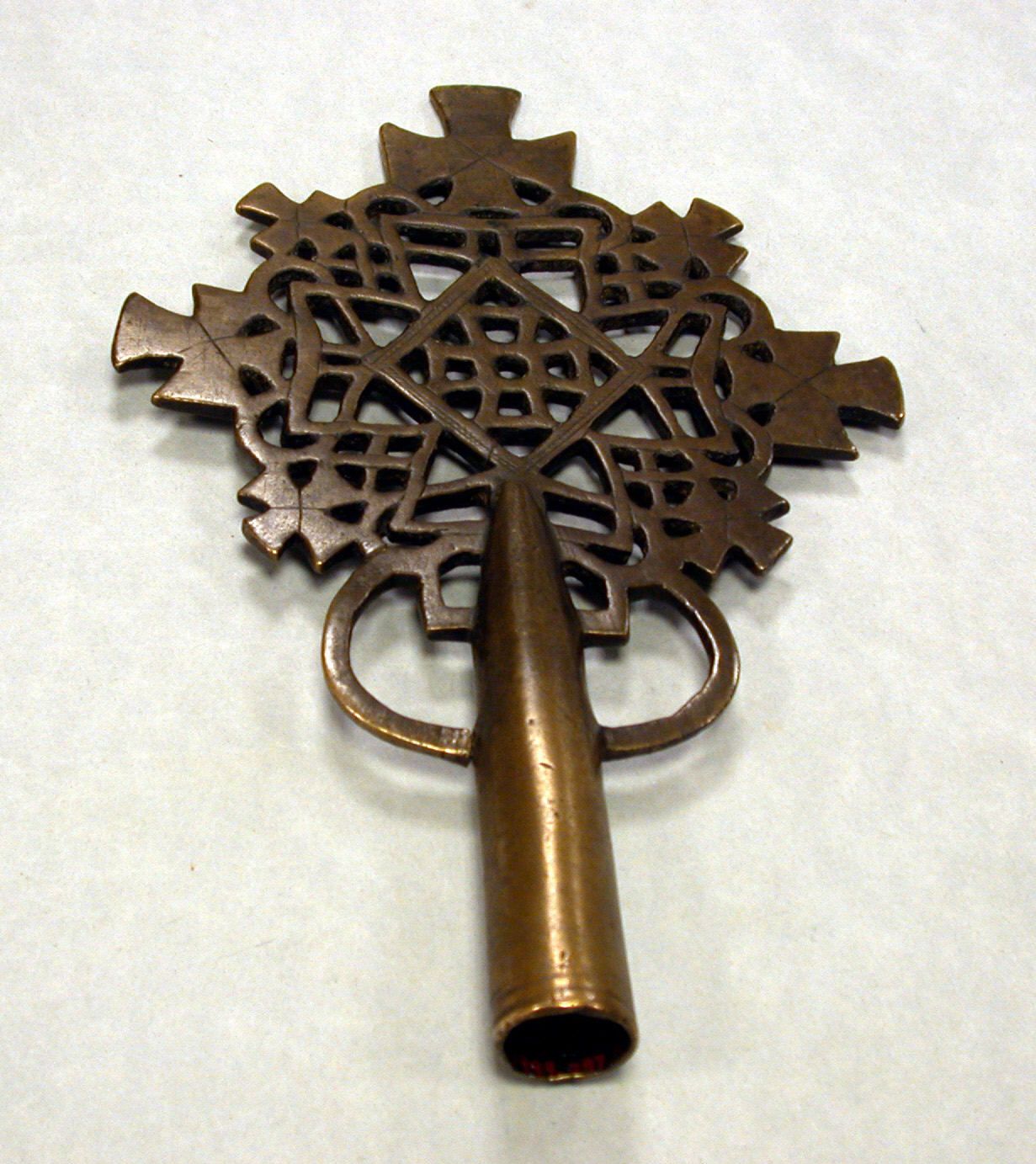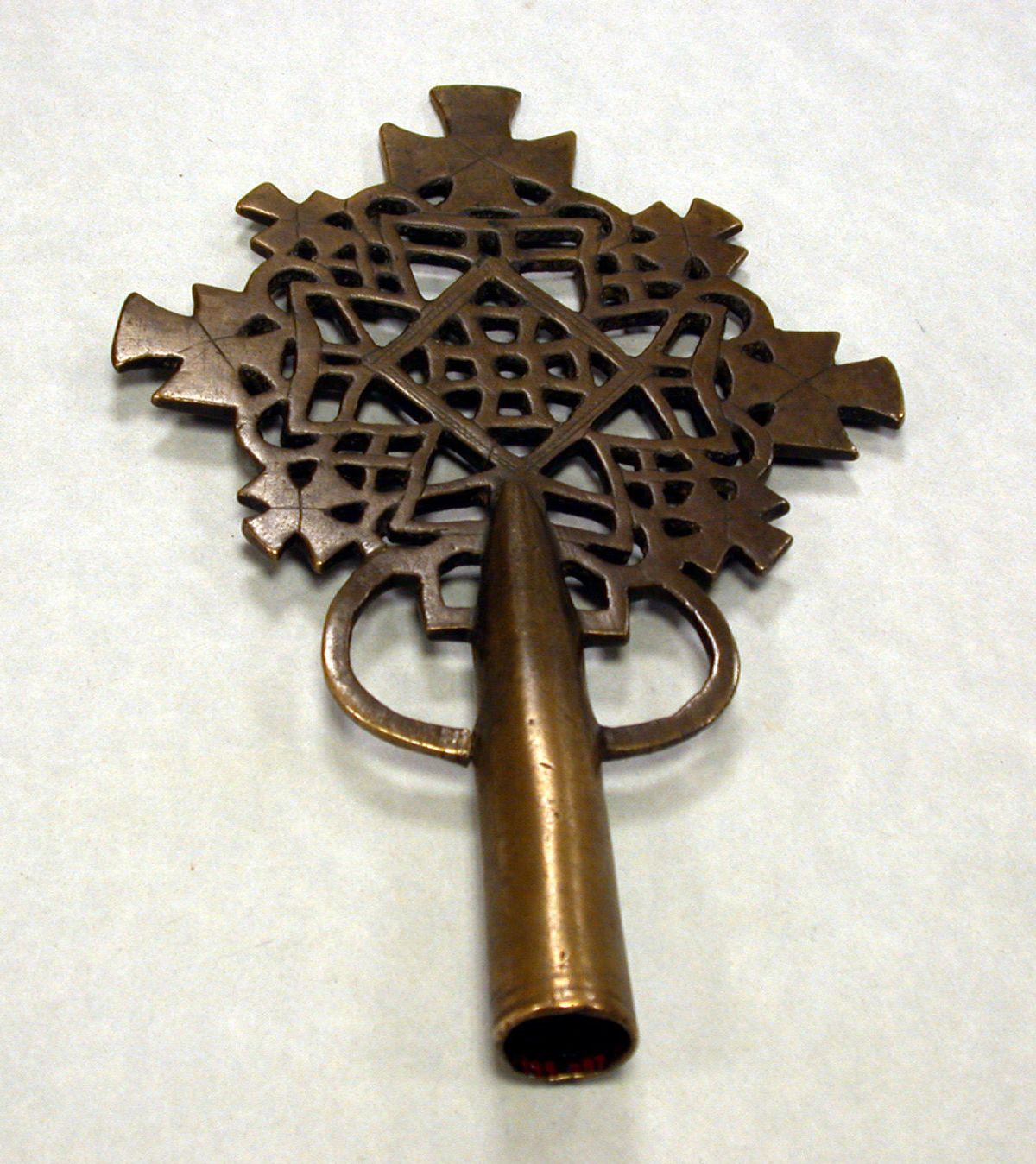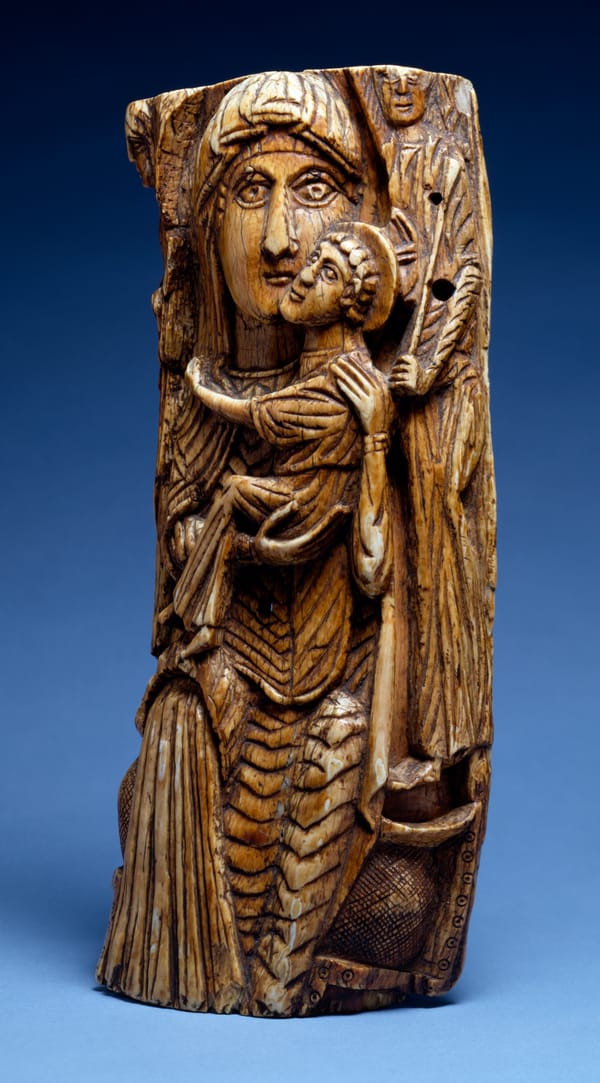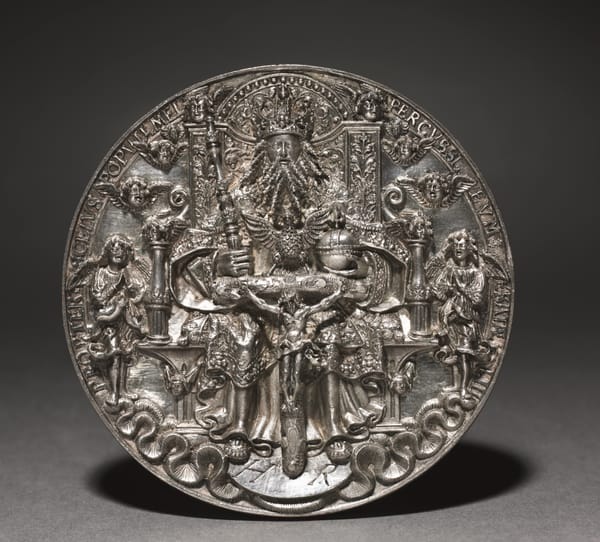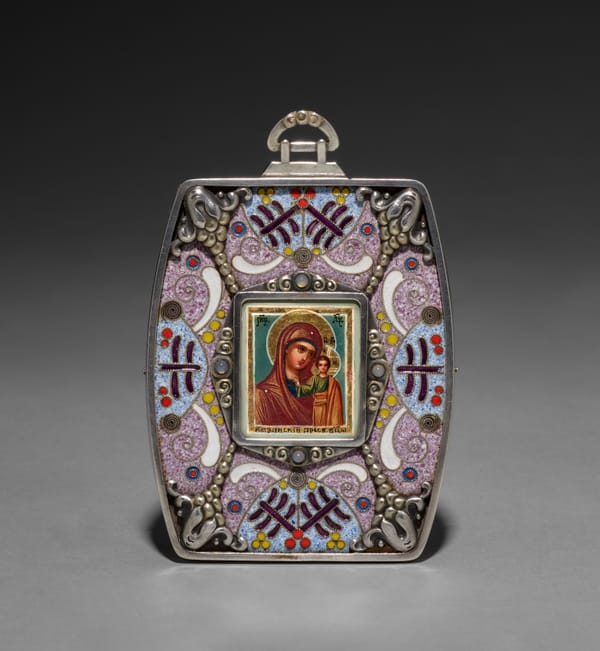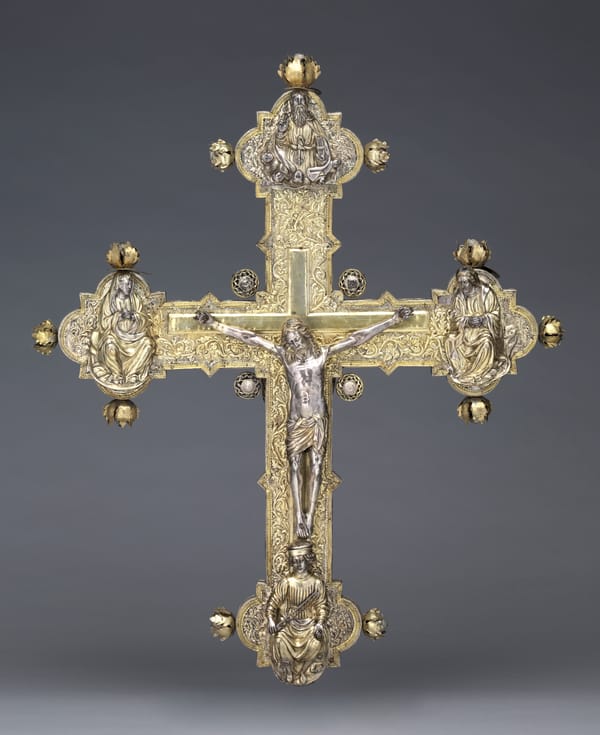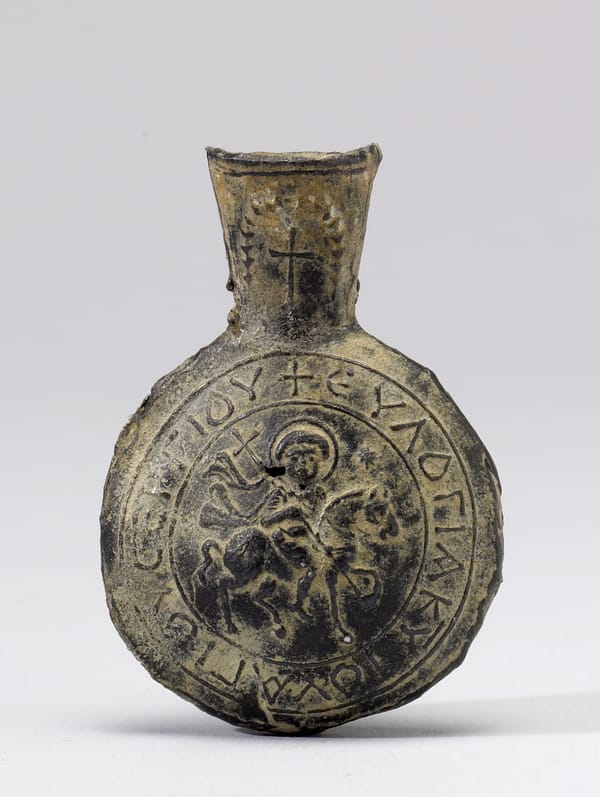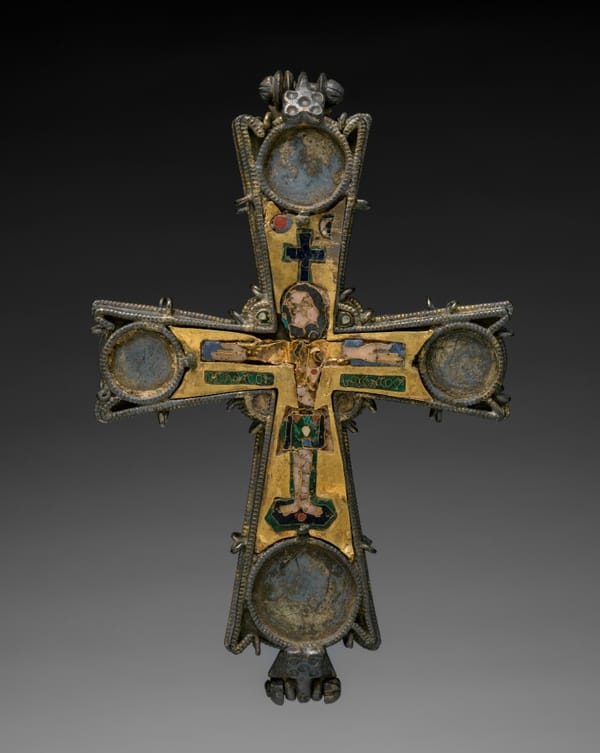Details:
This ornately cast cross was originally positioned at the summit of a staff carried by an Ethiopian Orthodox Christian priest. The artist has created a symmetrical design that repeats the form of the cross ad infinitum, emphasizing its importance through repetition. The major motif is a pattée cross, a square cross with flaring crossbars of even lengths. At least three of these crosses nest within one another, the spaces between them filled with diamond and geometric interlace patterns. Seven smaller pattée crosses form finials to the crossbars and emerge from the diagonals, creating a rhythmic step pattern that expands and contracts around the perimeter. Images of Christ are rare in Ethiopian crosses, reflecting Ethiopian Orthodoxy's dual belief in the cross as a sign of the Crucifixion and the Tree of Paradise. Thus, the small pattée crosses sprouting from the summit and sides of the frame may allude to budding leaves. Small incised lines on the surface emphasize that the cross’s many motifs were meant to appear as intertwined elements, rather than as discrete sections of a cutout. An incised rope-pattern on the central diamond and x-shaped lines on three of the outer crosses give further depth while emphasizing the central motif. The juxtaposition of positive and negative space employed in the cross would have created a dramatic silhouette against the sky during an outdoor procession, or cast an imposing shadow during a candlelit service. The cross’s warm bronze metal—darkened at the top, and slightly at the shaft from handling—would have shimmered in the light. Openwork looped arms at either side of the shaft held colorful streaming textiles that represent Christ’s shroud or Mary’s veil.
The cross is central to devotion and a preeminent cultural icon in the Ethiopian Orthodox Tewahedo Church. The cross became the object of intense devotion soon after the conversion of the Aksumite Empire to Christianity around 330 A.D. The flaring pattée cross used in this processional cross was one of the earliest forms of the cross known in Ethiopian Christian art, as demonstrated by Aksumite coins and carvings. Despite the antiquity of Ethiopian Christian art, processional crosses antedating the seventeenth century—such as this example—are rare due to sixteenth-century Islamic incursions that devastated the region. Its association with the hope of resurrection has made it a potent emblem of triumph. In this context, the sanctification of Christ’s cross with his blood further confers upon all crosses the infinite power to heal, bless, and protect.
